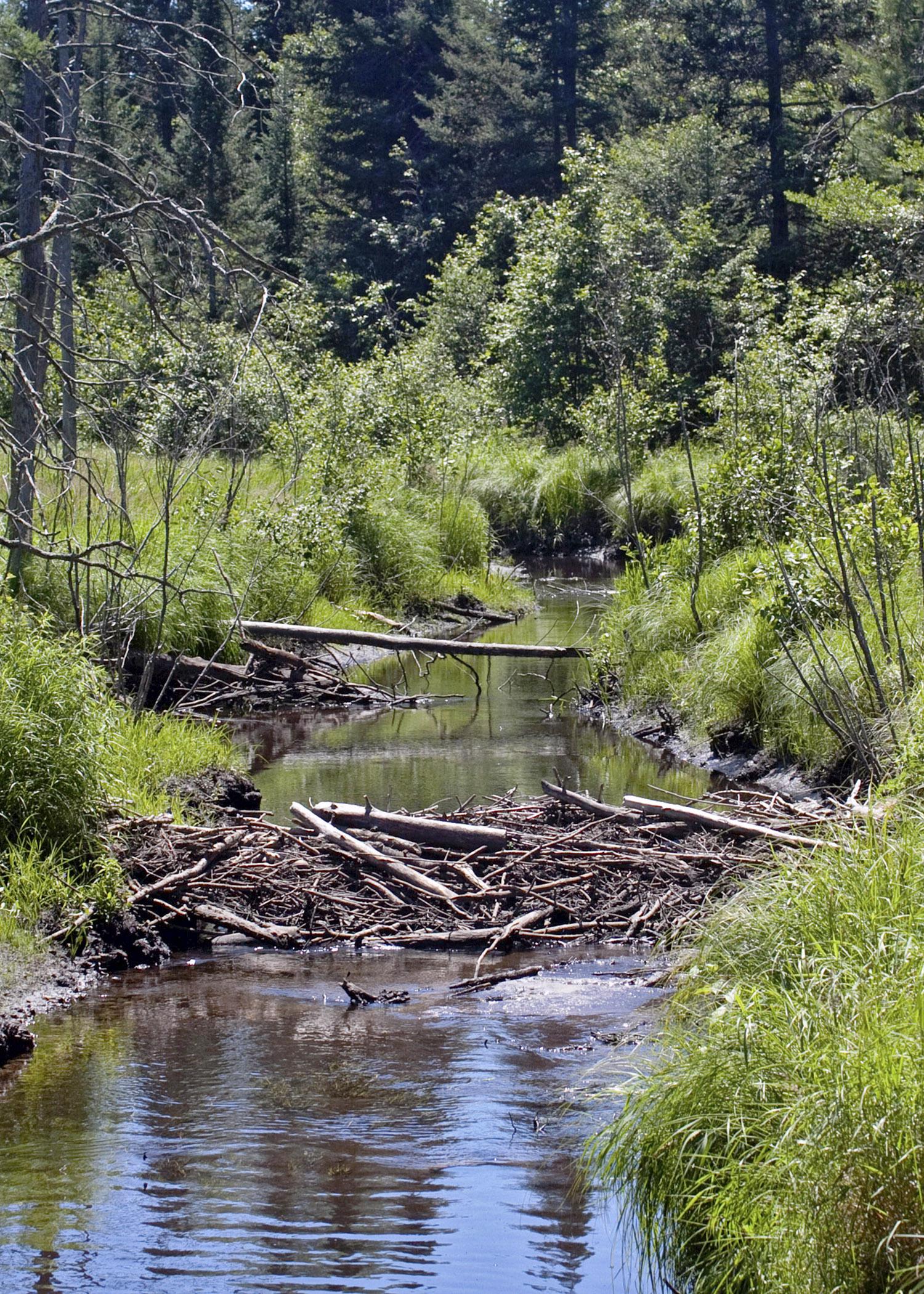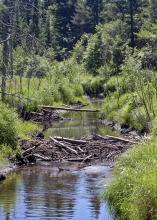Information Possibly Outdated
The information presented on this page was originally released on August 29, 2014. It may not be outdated, but please search our site for more current information. If you plan to quote or reference this information in a publication, please check with the Extension specialist or author before proceeding.
Beaver management is not a simple issue
By James E. “Jim” Miller
Professor Emeritus, Department of Wildlife Fisheries and Aquaculture
MSU Extension Service
MISSISSIPPI STATE -- The American beaver, the largest native rodent in North America, is an ecosystem engineer, building dams and creating ponds that contribute to plant and animal biodiversity. However, beavers can cause serious property damage and frustrate landowners and managers.
As a landowner, I appreciate the contributions beavers can make, such as creating waterfowl habitat. Yet, as an owner who has spent time, money and energy planting and managing trees on my property, I also understand why the population of beavers residing there needs to be controlled.
The damage beavers cause to properties varies. They may damage trees by gnawing and cutting; flood crops, property or transportation corridors by dam building; or damage pond dams, stream bank stability or levees by burrowing.
When I was an Extension wildlife specialist with the University of Arkansas in the late 1960s, I learned that not all people understand the types of and extent of damage beavers can cause. I heard from people on both sides of the issue, some harshly critical of beavers and the resulting damage to their properties and some endeared by the beavers’ natural habitat alterations and presumed cuddliness.
Landowners sometimes allow beavers to build their dams because the owners like to have ponds to attract wood ducks or other waterfowl and other aquatic species such as muskrats, mink and otters. However, if your land is relatively flat, if you have water control structures or if you allow a beaver to reside in your farm pond or lake for very long, you can anticipate suffering some beaver damage problems sooner or later.
There is no quick fix once beavers are firmly established on your property. Before initiating any type of control method, check local, state and federal statutes that define what techniques and tools can be used legally. Also be aware of potential impacts to non-target species, especially those that may be threatened or endangered.
If the beaver damage is limited to gnawing damage on shade trees or landscape vegetation, oftentimes the beaver can be excluded via heavy chain-link fencing. Alternately, cover the bases of the trees or vegetation up to three feet from the ground with metal coverings.
If the beaver dam or culvert obstruction is causing flooding, there are devices that can maintain the flow of water at an acceptable level to prevent future flooding. These devices are most effective when used in conjunction with exclosure-type fencing around the device to prevent the beaver from packing the perforated pipe with mud or vegetation.
There currently are no effective frightening devices or registered toxicants or repellents for beaver control. Hunting the beavers may provide some short-term relief, but it is very time-consuming and could be dangerous to humans and non-target animals. Also, it doesn’t prevent reinvasion by beavers from other areas.
The most effective method of reducing beaver damage is trapping or snaring where legal, coupled with dam removal or destruction, either mechanically or with explosives by trained professionals. Experienced trappers understand the habits and signs associated with beavers and set the most effective traps.
There are numerous ways of dealing with beaver damage. Diligence and persistence is necessary for landowners to keep beaver damage at a tolerable level.
For more information, read Mississippi State University Extension publication IS1655, Manage Beaver Problems in Mississippi.
Contact: Dr. Jim Miller, 662-325-2619

Editor’s Note: Extension Outdoors is a column authored by several different experts in the Mississippi State University Extension Service.




